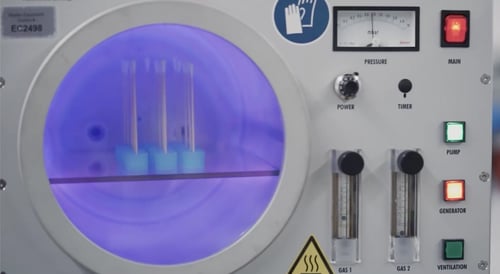One example of plasma technology would be the use of a plasma asher. The plasma ashing system, in general, involves removing organic matter through the application of plasma. The process gas is usually oxygen or a fluorine containing gas for the plasma ashing process. If there is inorganic matter, it will turn into a residue known as ash, in the plasma asher. The byproducts of this process are mainly volatile carbon oxides and water vapor. These byproducts are pumped away with the vacuum pump within the plasma asher.
Differences between Plasma Etch and Plasma Ash
The plasma etch process is the removal of certain material from another substrate surface to leave a desired pattern. A mask helps prevent the material underneath from being etched. In general, the process in the plasma etching system involves ion bombardment to remove material. The process gas should be chosen so the rate of removal of the uncovered material is higher than the removal rate of the masking material. This process is generally used in the semiconductor industries. Compared to plasma etching, the plasma ash process is the removal of organic matter with plasma. Residue may be left in the plasma ashing system, and the byproducts of carbon oxides and water vapor get pumped away. Furthermore, plasma ashing selectively removes the masking material, polymers and residues that formed during the plasma etch process. Unlike plasma etch processes which occur at low temperatures, the plasma ashing processes happen under high temperatures. Thierry offers the plasma technology required to perform a plasma etching or ashing process.

